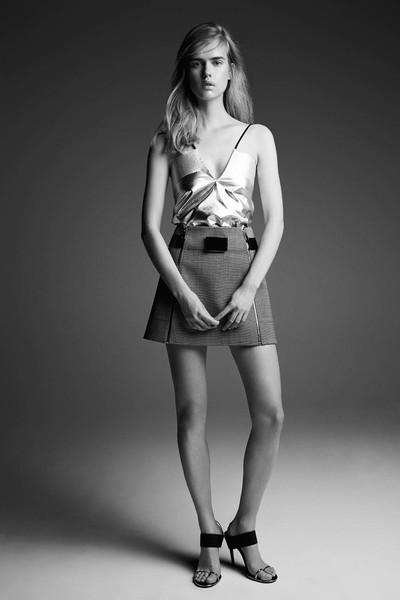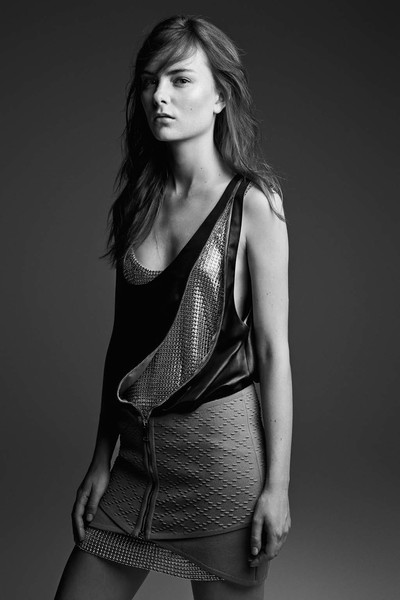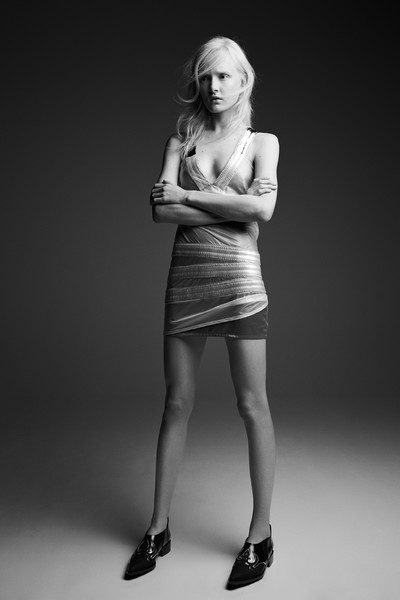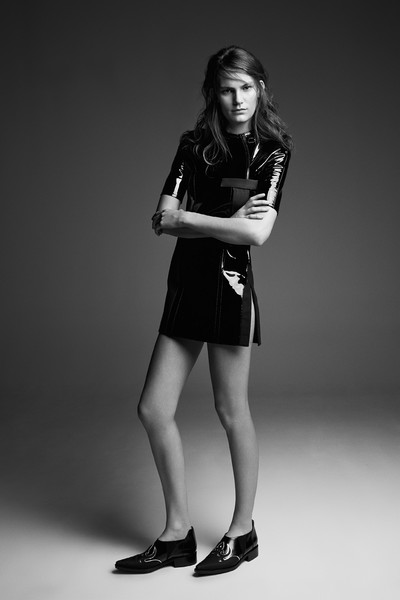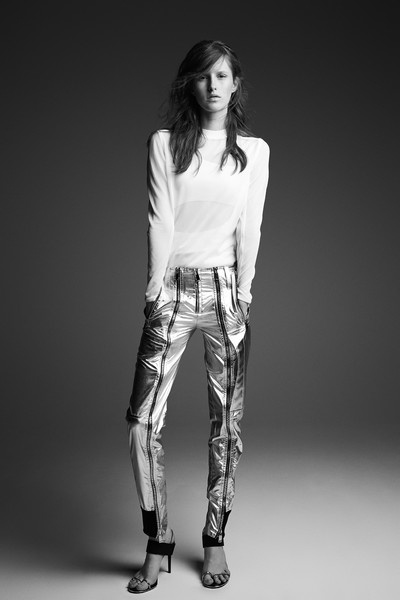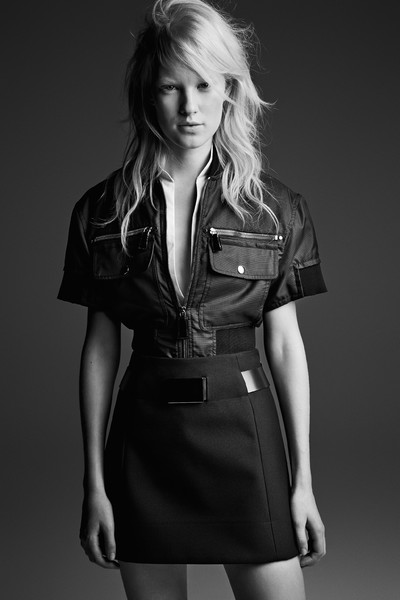By Jonathan Wingfield
Photographs by Patrick Demarchelier
Jonathan Wingfield: Let’s start by discussing the Paco Rabanne woman of today as an evolution from the past.
Julien Dossena: With this collection we wanted to redefine the Paco Rabanne girl of today. She is sophisti- cated and direct with a refined aesthetic. We looked to create something that was both accessible and avant-garde. I wanted to bring the Paco Rabanne girl into the everyday, onto the street. I was interested in the idea of a heroine: I wanted to arm her, to prepare her, and to that end build her a functional ward- robe with a new silhouette – something sharp and sensual. It’s a bit like the melding of those two qualities - that’s what I find interesting at Paco Rabanne.
The 1960s was an era when man went to the moon and everyone was looking towards the future – you just couldn’t avoid it. What in our modern society inspires you?
This fantasy of space and space exploration still exists in our modern world: we saw the Rover land on Mars and discover water! There are also other advances – advances in biology and medicine, on how we work with our bodies, on how we strive to become something more than human… Everyone has some kind of plastic surgery. Everyone works on their physical appearance. Everyone takes stem cells and vitamins. It’s no longer the fantasy of space but the discovery of man as an individual. What really interests me today is the integration of biology and medicine, of man and machine.
There are certain materials which are very much tied to Paco Rabanne’s history. How did you select the materials used in your collection?
I wanted to work with specific fabrics – innovative materials that push the boundaries. Nowadays, chain mail isn’t necessarily the most innovative mate- rial. At the time, it was shocking and fun – it could now be viewed as ironic or retro-futuristic. I’m more interested in a Nike windbreaker which is more modern and possibly more ‘tech- no’ than reworking the metal materials which Paco Rabanne used in the past. So, I asked myself, what are the fabrics now that we have developed and advanced technologically? We took the savoir-faire of the house but developed the fabrics with modern technology - for example, we took Japanese silks and lacquered them. We also reworked the metal to make it more contemporary. We developed a fabric that looked like mercury and created a pair of trousers that seemed like they were soaked in liquid metal.
Do you have an image of Paco Rabanne in your head that remains quite strong in your memory? And is there a contemporary image that inspires you?
There is a picture that I really love of Jane Birkin walking down the street wearing a chain-mail evening dress. It’s as if she got dressed that morning in her metal dress just like she would put on any old pair of jeans. There’s a dichotomy that I find very interesting. A modern image I like would be of Sigourney Weaver in Alien. There’s a scene of her waking up in knickers and a cotton tank top – very classic, very unisex – but she has an astronaut’s helmet on. She’s trying to protect herself from the Alien. She even has an axe in her hand. [Laughs] It’s the balance between the axe, the underwear, white tank top and the ‘techno’ helmet; I like these contrasts.
‘I wanted to add my personal touch. Paco Rabanne was a young designer who wanted to dress the girls of his generation. I want to do the same for mine.’
How would you describe the codes of the house of Paco Rabanne today as designed by Julien Dossena?
Paco Rabanne has a modern heritage. We are re-establishing the codes and developing a strong identity to put the brand back on the market. The values of the brand are unique when you look at it in the context of the luxury marketplace in France; there is an idea of a utopian future, something that is very modern and alive. We thought about how we could push the brand commercially as well as aesthetically. We decided that for Paco Rabanne, innovation comes first. I didn’t actually go into the archives because we are already famil- iar with that aesthetic. What you see now with many collections from other fashion houses is that designers aren’t referencing the archives but rather are looking for a new language or vocabulary. You can do that by choosing a few values of the house but not necessarily adopting the previous aesthetic. We look at the past and twist it; so we can look to the future from that perspective as well as our own. You need to find a good balance between the past and the future. I wanted to add my personal touch because I wanted to speak to my generation. In the 1960s, Paco Rabanne was a young designer who wanted to dress the girls of his generation. I want to do the same for mine.
Models: Emilie Ellehauge @ Scoop Models, Lena Hardt @ DNA, Linn Arvidsson @ DNA, Magdalena Jasek @ Oui Management, Maja Salamon @ Next Model Management, Stina Rapp @ Women
Hair: Tomohiro Ohashi @ Management+Artists
Hair Assistant: Kiki
Make-up: Aude Gill c/o Studio 57
Manicurist: Sophie A @ Callisté
Photo Assistants: Frédéric Bealet, Dovile Babraviciute. Digital Technician: Jimmy Mettier
Tailor: Ayesah Allybuccus
Shot at Studio Rouchon
Retouching by The Adrien Blanchat Company
